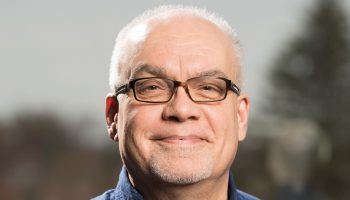Native plants offer many benefits for gardens and yards: they require less water, are more disease-resistant and help improve local ecosystems.
But there’s another reason why gardeners might want to keep around native plants: less work.
“If you select the right plants, you shouldn’t have to work so hard,” said Ken Parker, a New York State Certified Nursery Landscape professional.
Parker will present a talk titled “Conscientious Neglect: Landscaping With Local Native Plants” at the Bird, Tree & Garden Club Brown Bag lecture at 12:15 p.m. Tuesday in Smith Wilkes Hall, followed by the second day of the Native Plant Sale from 1:30 to 4:30 p.m.
The annual BTG sale, now in its third year, will offer a variety of flowers and shrubs. Parker and several master gardeners will also be on-site to offer plant-related advice and suggestions.
Parker, who has worked in the horticulture business for 25 years, said he discovered early on that indigenous plants are often preferable to non-native ones.
“I started gardening in my backyard, and stumbled upon learning that the plants from where you live are the strongest,” said Parker, who is also diabetes program coordinator for the Seneca Nation Health Department.
Parker’s lecture will offer information on how to use native plants for culinary, medicinal and spiritual uses, as well as how to better the environment.
Another reason to use native plants? For Pari Tuthill, chair of the sale, it comes down to being mindful of the lake. Native plants don’t need pesticides and help stabilize the soil, she said.
“They are naturally within that environment,” Tuthill said. “They survive nicely, they don’t need anything to help them along.”
Parker recently worked on a project for the Seneca Nation of Indians called “Food Is Our Medicine.” It aimed to promote healthier eating and encourage traditional foods for Native Americans, though Parker believes the issue is more widespread.
“For all our cultures, we’ve forgotten how to use plants,” he said.
Many plants native to Western New York can be used for food, teas and medicines, Parker said. Among his favorites are black chokeberries, naturally occurring in the area and high in antioxidants.
“Gardening should be three-dimensional. It shouldn’t be just aesthetics,” Parker said. “I want people to experience it. That’s what I think we’re missing now in gardening.”
Native plants are also less prone to pest problems, Tuthill said, and she opts for home remedies if pests do persist. Lately, her strategy of choice is to offer a cup of beer to the slugs and earwigs in her garden.
“They love it,” she said. “They climb into it and they don’t climb out. They get drunk and can’t move anymore.”
Parker hopes more towns will regain their “regional look” through re-introducing plants native to their respective areas.
“We should be able to see all these plants in our roadsides and our parks. And we no longer do,” he said. “What I’m trying to do is to encourage people to help put them back.”
Tuthill offered a final reason in favor of native plants: they’re beautiful.





